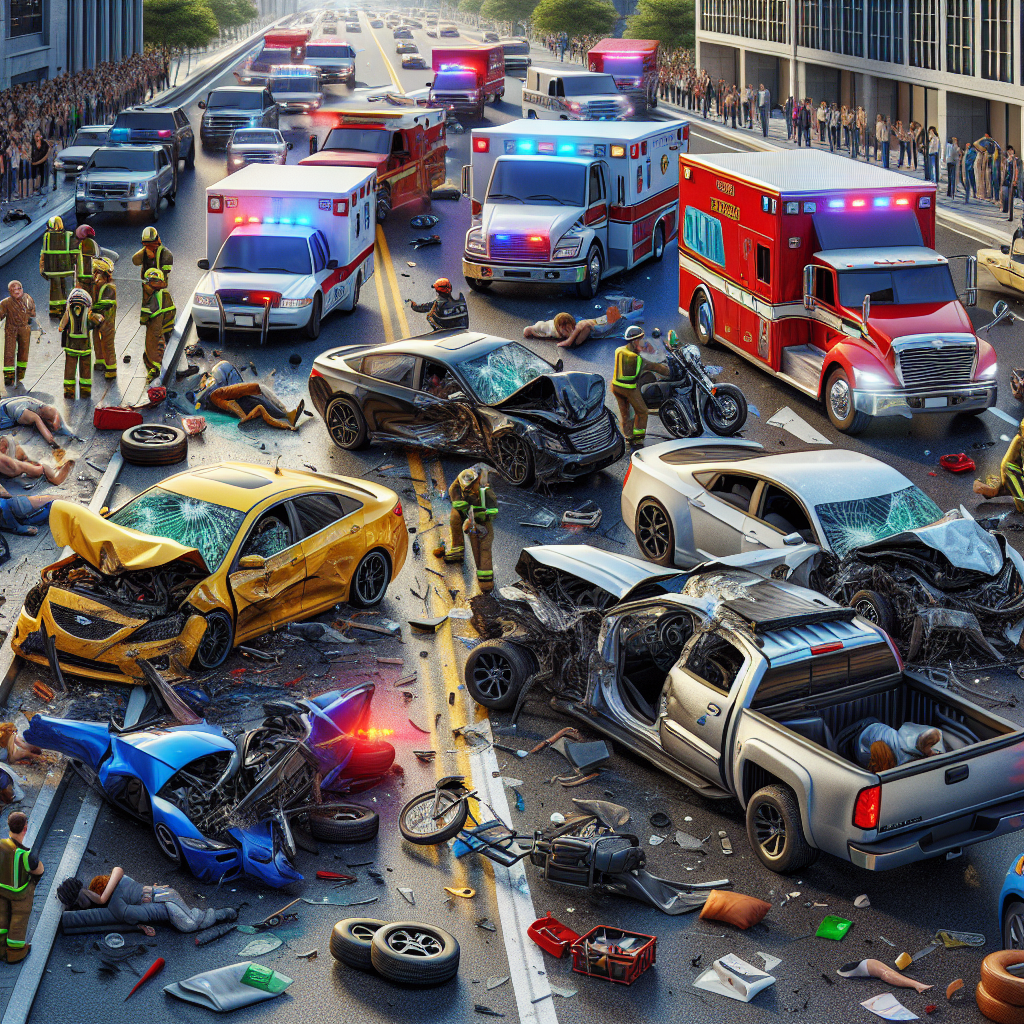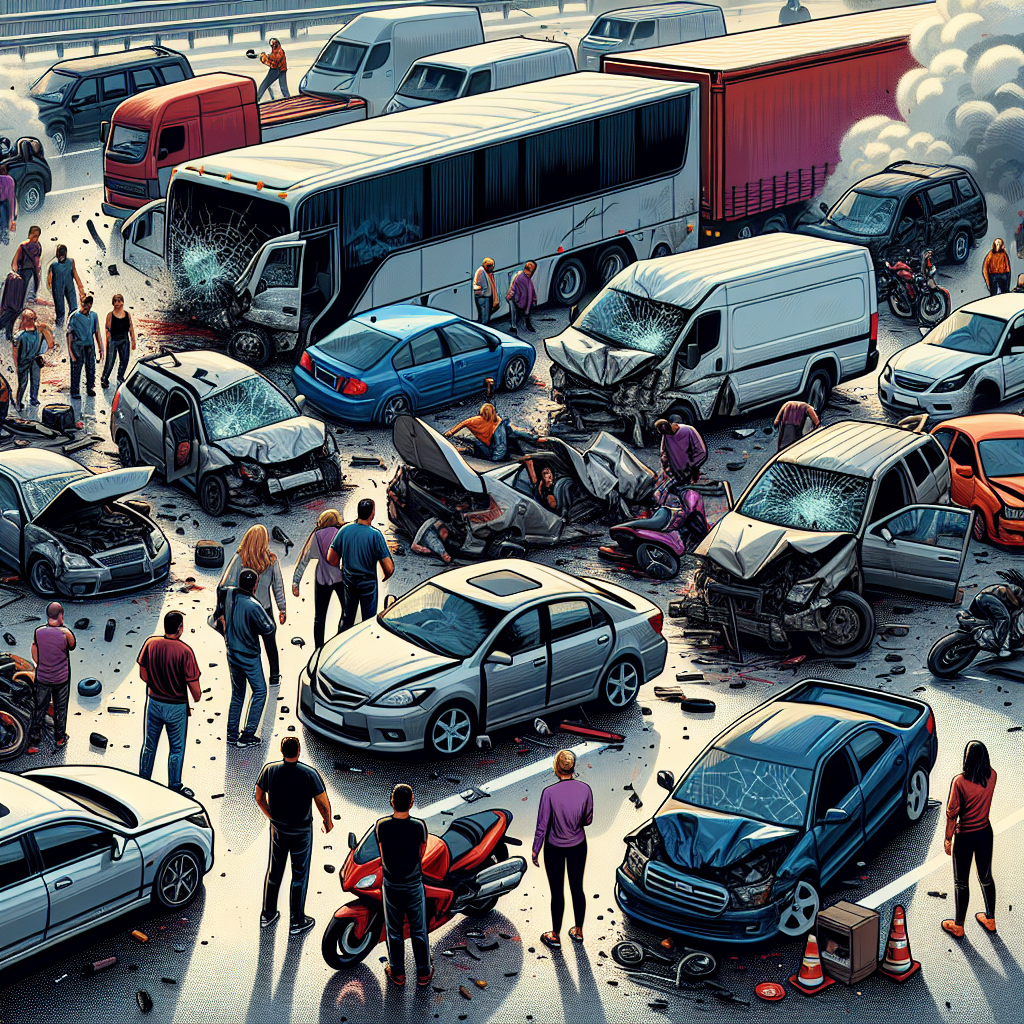-
Table of Contents
Multiple Vehicle Accidents: Causes, Consequences, and Prevention

Multiple vehicle accidents, also known as multi-car pileups or chain-reaction crashes, are some of the most devastating and complex accidents on our roads. These accidents involve three or more vehicles colliding in a chain reaction, often resulting in severe injuries, fatalities, and significant property damage. Understanding the causes, consequences, and prevention strategies for multiple vehicle accidents is crucial for improving road safety and reducing the number of these tragic incidents.
The Causes of Multiple Vehicle Accidents
Multiple vehicle accidents can occur due to a variety of factors, including:
- Weather conditions: Poor weather conditions such as heavy rain, fog, or snow can reduce visibility and make roads slippery, increasing the risk of multiple vehicle accidents.
- Distracted driving: Drivers who are distracted by their phones, passengers, or other activities are more likely to cause a chain-reaction crash by failing to notice slowing or stopped traffic ahead.
- Tailgating: Following other vehicles too closely reduces the time available to react and increases the likelihood of a chain-reaction crash if the leading vehicle suddenly stops or slows down.
- Speeding: Excessive speed reduces a driver’s ability to stop or maneuver their vehicle in time to avoid a collision, increasing the severity of multiple vehicle accidents.
- Impaired driving: Driving under the influence of alcohol or drugs significantly impairs a driver’s judgment, coordination, and reaction time, making them more likely to cause or be involved in a multi-car pileup.
The Consequences of Multiple Vehicle Accidents
The consequences of multiple vehicle accidents can be devastating, both in terms of human lives and property damage. Some of the key consequences include:
- Injuries and fatalities: Multiple vehicle accidents often result in severe injuries and fatalities due to the high impact forces involved. The chain reaction of collisions can lead to a domino effect, causing more severe damage to vehicles and occupants.
- Property damage: Multi-car pileups can cause extensive damage to vehicles involved, leading to significant repair costs or even rendering the vehicles totaled.
- Traffic congestion: Multiple vehicle accidents can block multiple lanes or even entire highways, leading to traffic congestion and delays for other motorists.
- Psychological trauma: Being involved in a multiple vehicle accident can have long-lasting psychological effects on survivors, including anxiety, post-traumatic stress disorder (PTSD), and a fear of driving.
Prevention Strategies for Multiple Vehicle Accidents
While multiple vehicle accidents can be challenging to prevent entirely, there are several strategies that can help reduce their occurrence and severity:
- Education and awareness: Increasing public awareness about the causes and consequences of multiple vehicle accidents can help drivers make safer choices on the road. Educational campaigns, driver training programs, and public service announcements can play a crucial role in this regard.
- Enforcement of traffic laws: Strict enforcement of traffic laws, including speed limits, following distance, and distracted driving regulations, can deter risky behaviors and reduce the likelihood of chain-reaction crashes.
- Improved road infrastructure: Well-designed roads with clear signage, proper lighting, and adequate space between lanes can help prevent multiple vehicle accidents. Additionally, implementing measures such as rumble strips and guardrails can provide additional safety measures.
- Advanced safety technologies: The integration of advanced safety technologies in vehicles, such as automatic emergency braking, lane departure warning systems, and adaptive cruise control, can help prevent or mitigate the severity of multiple vehicle accidents.
Case Study: The I-75 Pileup
An example of a devastating multiple vehicle accident is the I-75 pileup that occurred in Gainesville, Florida, in January 2012. This chain-reaction crash involved 12 passenger vehicles and 7 tractor-trailers, resulting in 10 fatalities and 18 injuries.
The accident was primarily caused by reduced visibility due to heavy smoke from a nearby brush fire. The smoke combined with fog and darkness made it difficult for drivers to see the road ahead, leading to a series of collisions. The lack of sufficient distance between vehicles and excessive speed further exacerbated the severity of the accident.
Conclusion
Multiple vehicle accidents are complex and devastating incidents that can have severe consequences for individuals and society as a whole. Understanding the causes, consequences, and prevention strategies for these accidents is crucial for improving road safety and reducing their occurrence. By addressing factors such as weather conditions, distracted driving, tailgating, speeding, and impaired driving, we can work towards creating safer roads for everyone. Through education, enforcement, improved infrastructure, and advanced safety technologies, we can make significant progress in preventing multiple vehicle accidents and protecting lives on our roads. If you ever need assistance and help with handling your injuries after such an event call our office at 702-999-8888.



